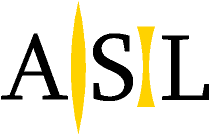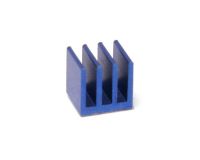The eShapeoko is a low-cost CNC milling machine, the smaller sizes of which are suitable for desktop use. It is also a generic three-axis cartesian movement platform with numerous uses beyond milling, and it is incredibly easy to expand and upgrade.
Shipping time: the eShapeoko kits normally take one or two weeks to ship.
If you order other parts with your kit, they will arrive together.
Looking for a complete kit, with motors and electronics? Please read the purchasing guide.
The eShapeoko is based on Edward Ford's Shapeoko 1, with numerous changes and improvements that bring it to the same level of performance as Edward's Shapeoko 2 (and Inventables X-Carve). Shapeoko is an open-source project. Thank you, Edward! The low-cost aspect, while retaining precision, is thanks both to Edward's hard work in refining the design, and to Bart Dring's brilliant linear motion system, MakerSlide. Thank you too, Bart!
The current version of the kit is 1.6.0. We will update the instructions soon. In the meantime, please refer to the parts list and assembly instructions for version 1.4.1 on the wiki. Drawings for the custom parts are available on GitHub (scroll down for link to PDFs).
We have removed options that were rarely ordered. Single-X rail, single-Y drive and the nylon spacers for the X carriage are discontinued. All machines are now dual-X, have aluminium spacers for the X carriage, and have dual Y drive. The base price also includes the trapezoidal leadscrew, and the M8 threaded rod is no longer available. We have updated the base price to include these options.
All machines have open end plates. We supply two sections of 20 mm by 40 mm extrusion of the appropriate length to connect the front two and rear two plates together. (The machine pictured is 500 mm single X and 500 mm Y with NEMA 17 motors.)
For the longer Y rails, you will get one or two pairs of mid-span supports. For the standard frame, these can be secured with a bracket or mounting block (not included). They have two oval holes for M5 screws, 10 mm from the bottom, allowing 20 mm to 30 mm between screw centres. The deluxe frame (available for 750 mm or longer machines) includes two more pieces of 20 mm × 40 mm extrusion, to form a rectangle at the base (fasteners included for blind joints). The mid-span supports attach to those (fasteners included). Please see the assembly instructions for details.
All sizes include fasteners to bolt the two X rails together, for extra stiffness. The construction of the X carriage uses aluminium spacers. This version comes with the new 4 mm aluminium carriages, more than twice as stiff as the original 2 mm stainless steel ones used up to version 1.4.0. The old carriages are part EM-LMP-rev-4, the new ones are EM-LMP-rev-6.
The Z axis uses a Tr 8 x 2 "metric ACME" trapezoidal leadscrew, 175 mm long, with an acetal (Delrin) lead nut. The M8 × 1.25 threaded rod is no longer available. The leadscrew is supported at one end by a self-aligning bearing block, and secured with set screws.
The size of the machine affects the price more than the X and Y MakerSlide alone, because of:
- the belts (both X and Y)
- mid-span supports (Y only)
- nuts and bolts to attach X rails together
- length of the 20 mm by 40 mm extrusion that connects the end plates together (X only, or both X and Y for the deluxe frame option)
We can also cut your rail and frame to a custom size. Please order a standard size, and see here on how to order it cut down to a custom size.
This is a mechanical kit only. It includes the belts, the belt pulleys, and the hardware to attach the motors, but it does not include stepper motors, nor any control or driver electronics. Basically, if it's mechanical, it's in there; if it uses electricity, it's not. If you are looking for a complete kit, including electronics and motors, we don't sell it as such, but we have most of the parts available separately. Please read the purchasing guide.
Four stepper motors are required: one on X, two on Y, and one on Z. The base model supports NEMA 17 motors with 5 mm diameter shafts, and includes M3 fasteners and spacers and 5 mm bore belt pulleys and flexible coupler. You can choose to replace these with M5 hardware suitable for NEMA 23 motors, and 6.35 mm (1/4") bore belt pulleys and flexible coupler. You can choose to upgrade only the X and Y axes, or all three axes. In our opinion, a NEMA 23 motor on the Z axis is seldom necessary, but it is a popular option. A larger Z motor mounting plate will be supplied to accommodate the footprint of the NEMA 23 motor.
The kit supports one motor and belt configuration out of the box, but others are possible, either with the included hardware, or with minimal additional hardware.
Please note that the MakerSlide, the Z motor plate and the belt tensioners come with the holes untapped. You will need an M5 × 0.8 tap and a suitable handle. Other than that, only common tools are required: 8 mm spanner, metric Allen keys from 1.5 mm to 4 mm, a small piece of fine sandpaper for metal. You need to drill a number of 3 mm holes through the extrusion (the location of these holes is not critical). You will need a corded or cordless drill, drill bits (3.0 to 3.5 mm), clamps to hold the rail down while drilling, and eye protection. If necessary for the assembly of the selected configuration, the kit includes a Torx T25 key (for the deluxe frame). The easiest method to secure the machine to the table is to drill holes through the extrusion connecting the end plates and screw it down (screws not supplied). You can also attach it from the bottom, using T-slot insertion nuts (available separately) and M5 screws (not supplied). For adjustment and calibration, you'll need a long ruler or a tape measure, and, ideally, a set square and a digital caliper.
This is a kit, not a finished product, and you are responsible for your safety and the safety of others during its assembly and operation. Please use sensible precautions.
FAQ
If you have a question not covered here, please use the Contact Us link at the bottom of every page in the store.
Q: Is this the same kit as the one sold by Inventables or Carbide 3D?
A: No, this is our own kit. We are not affiliated with Inventables, Carbide 3D, or Edward Ford.
Q: Is eShapeoko a Shapeoko?
A: This is more of a philosophical question. See
this discussion. eShapeoko is largely the same as Edward Ford's Shapeoko, with the same brilliant economy of design, but it includes a number of changes. Some come from Edward himself, some from the most excellent
community, and a few are our own ideas.
Q: What does the "e" stand for?
A: "European", initially. Now it also means "enhanced" and "extended". We'll let you decide whether we deserve "excellent", "extraordinary" and "fabulous".
Q: But there's no "e" in "fabulous"!
A: You're right, there isn't. We got carried away.
Q: What are the differences between eShapeoko and Edward Ford's Shapeoko 1 (the first Inventables kit, no longer available)?
Q: What are the differences between eShapeoko and Edward Ford's Shapeoko 2 (the second Inventables kit, no longer available)?
Q: What are the differences between eShapeoko and Inventables' X-Carve?
Q: What are the differences between eShapeoko and Edward Ford's Shapeoko 3 (sold by Carbide 3D)?
A: By the way, we think that all the differences between eShapeoko and Shapeoko 1 are improvements. The eShapeoko and the Shapeoko 2 are about evenly matched, although each has some better parts compared to the other. The X-Carve has about the same performance as the Shapeoko 2. The Shapeoko 3 is a more rigid machine, but also heavier and more expensive. Please read more
on the wiki.
Q: What is the same as Shapeoko 1, 2 and X-Carve?
A: Overall design. Makerslide. V-wheels. Idlers. Open belts on X and Y. Choice of NEMA 17 or NEMA 23 motors for X and Y.
Q: Do you sell a complete kit?
A: No, but we sell most of the parts. Please read
this guide.
Q: How do I connect the two Y motors?
A: The simplest way is to use the
GAUPS, which has four drivers, two of which can be connected to drive the Y axis. If you have only three drivers, you can connect the Y motors in parallel to one driver. Or, if you have a board with four (or more) drivers and firmware that supports this, such as the TinyG, you can map two drivers to the Y axis. LinuxCNC also supports mapping more than one set of outputs to a given axis.
Q: Do you sell the motors or the electronics?
A: Yes, we have motors, drivers, driver shields, power supplies and so on. Read
this guide.
Q: What about limit switches?
Q: Can I use the eShapeoko for things other than milling, such as 3D printing?
A: Yes! Of course, you'd need a print head, and possibly a heated bed. See the Shapeoko forum for many ideas. We like the Wade extruder with Greg Frost's modifications ("guidler", herringbone gears) and the J-Head Mk V-BV hot end by Brian Reifsnyder, but options abound.
Q: Can I use RAMPS (or other 3D printer electronics) to drive the eShapeoko?
A: Yes! However, the usual eShapeoko drivers run at 24 volts, while RAMPS runs at 12 volts. With the lower voltage, you won't get the same speed and torque, but it will work reasonably well.
Q: Are the parts really blue, green and yellow, as in the model?
A: No. The parts are bare aluminium alloy or stainless steel, not finished in any way (mill finish). Feel free to paint them, or use a belt sander to give them a brushed look. Send us pictures!

